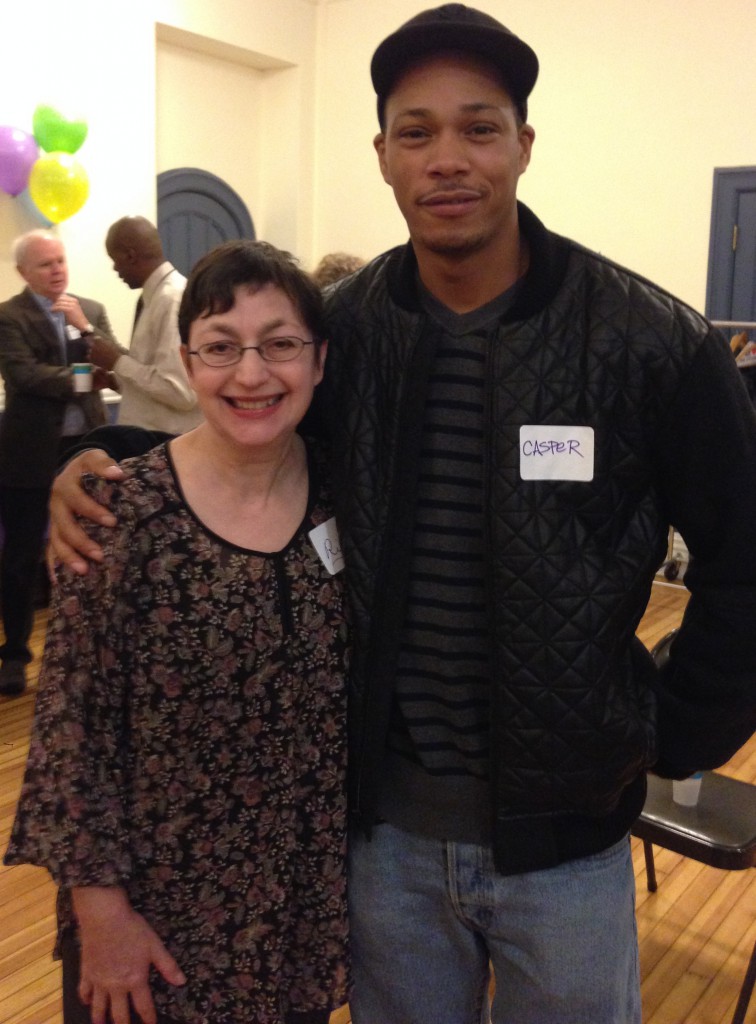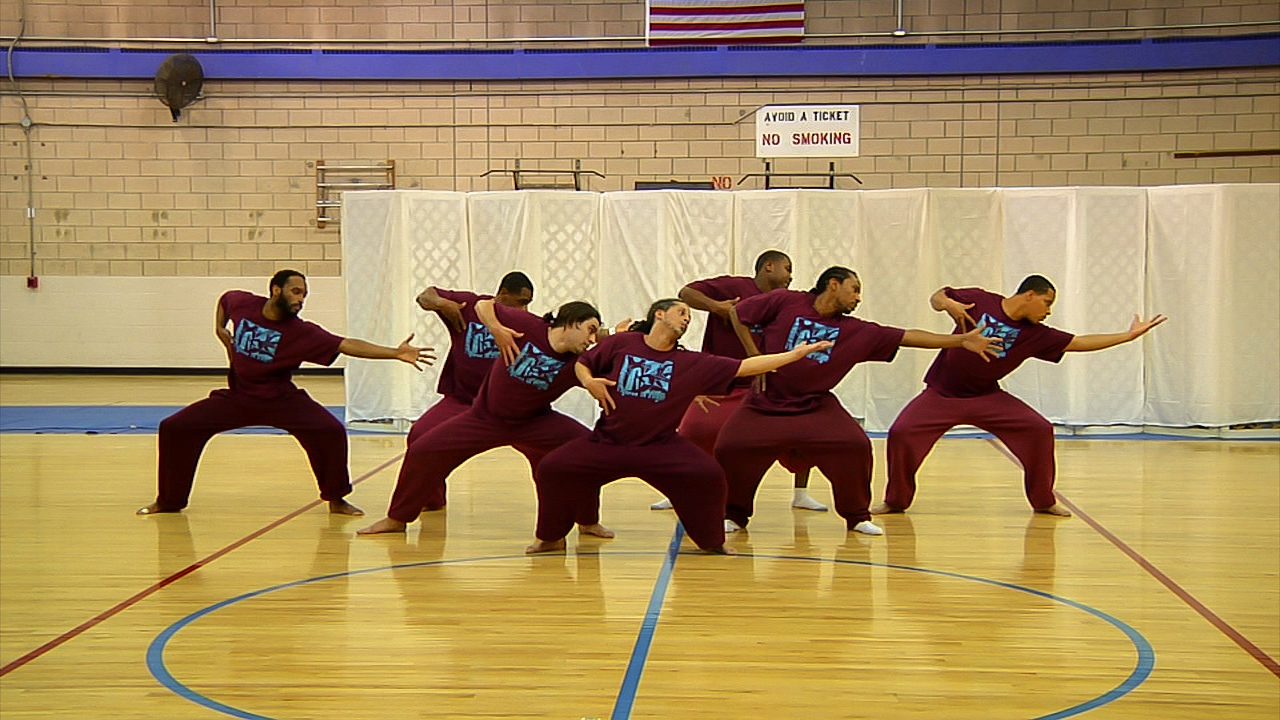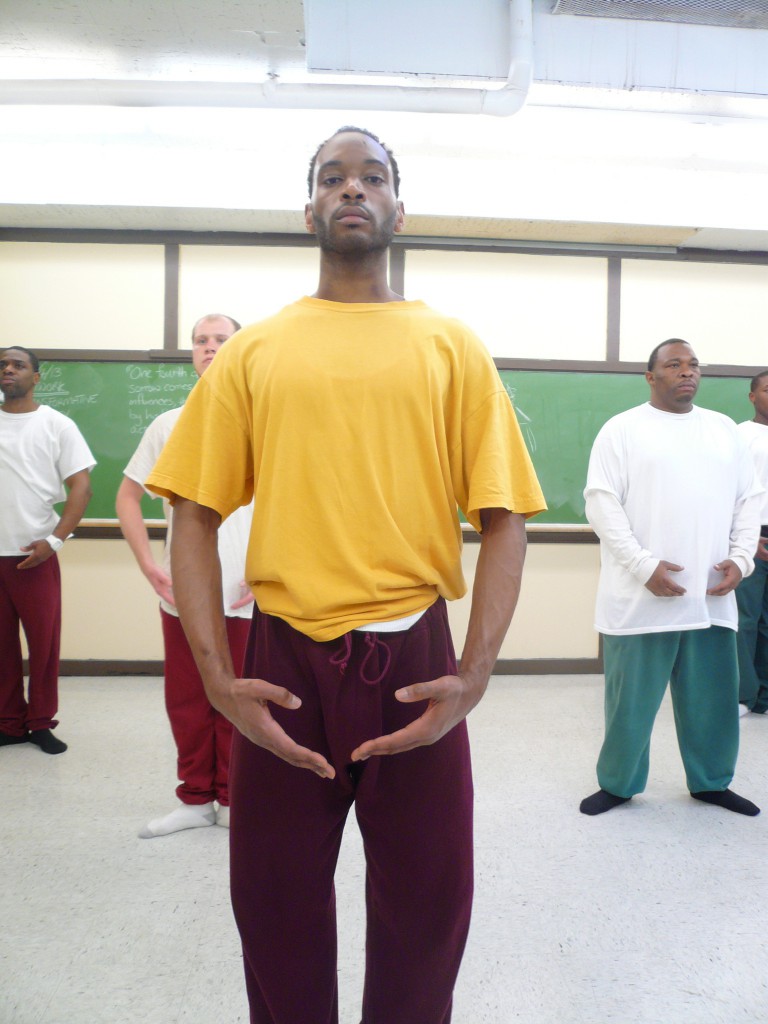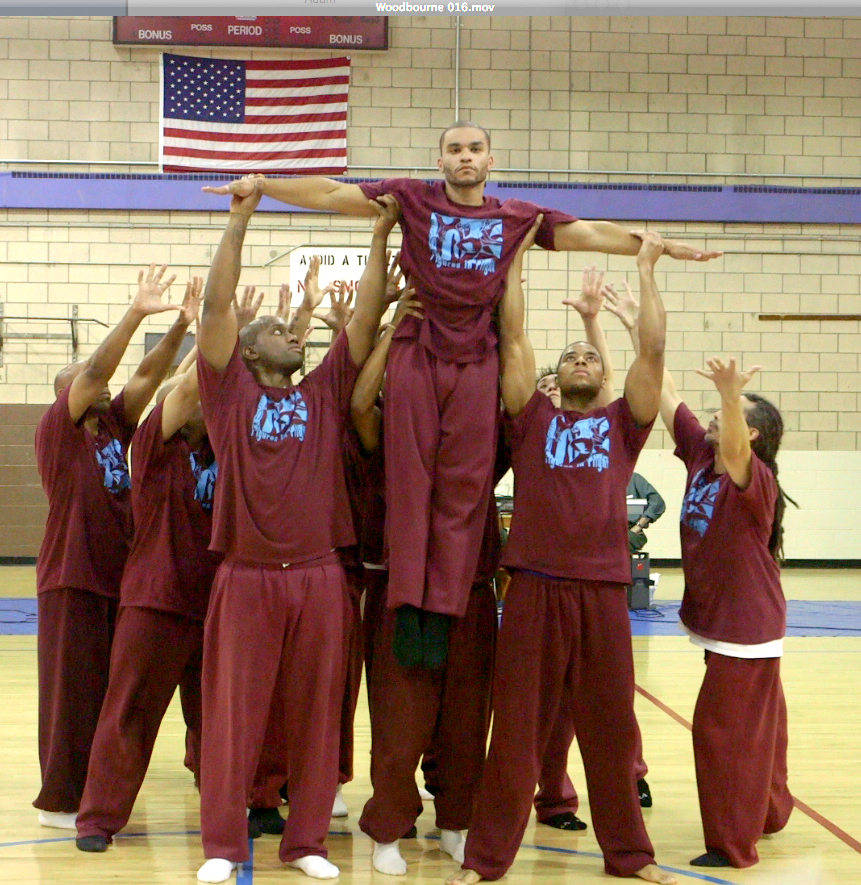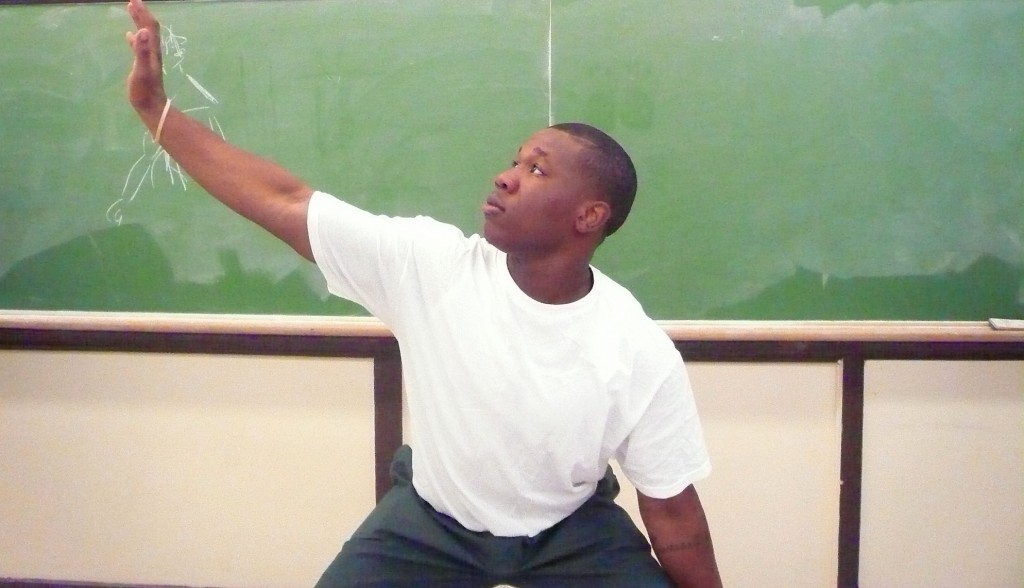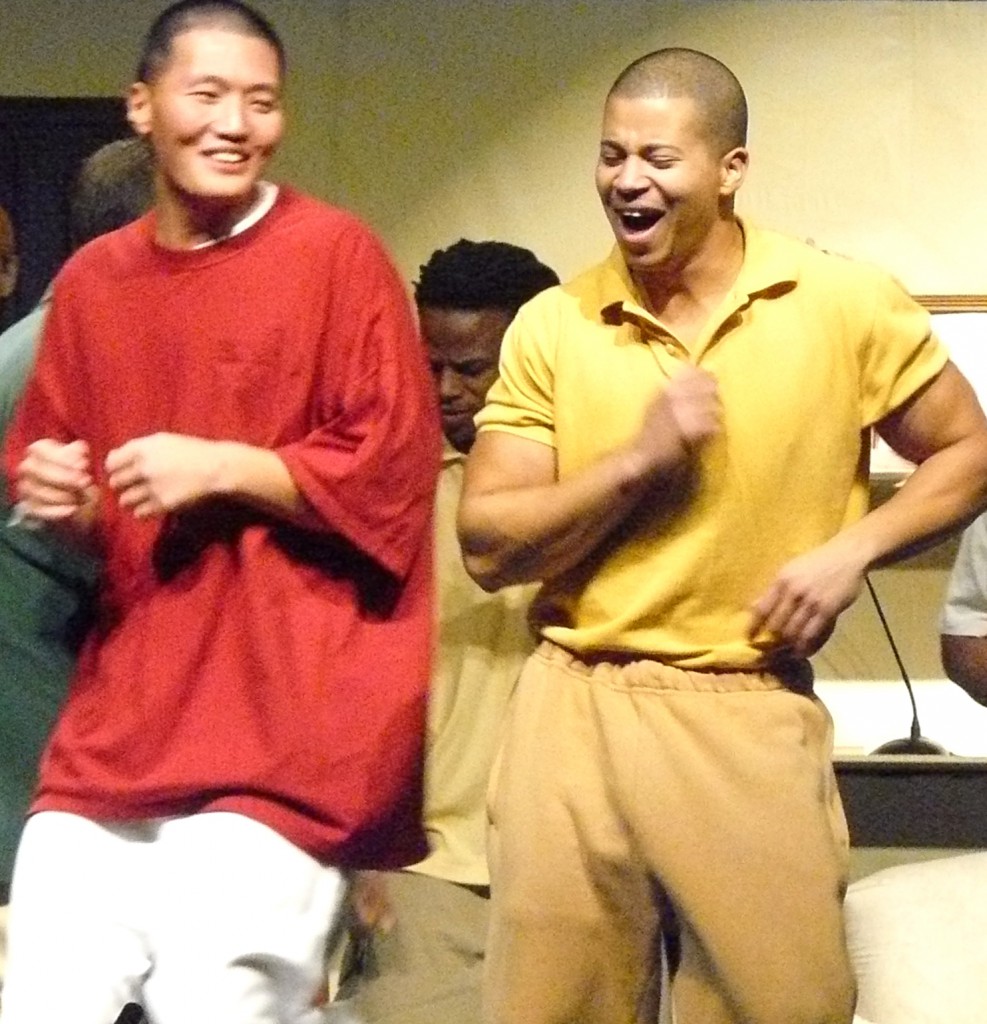Rehabilitation through the Arts: An Act of Bravery
An Interview with Ricki Gold
Ricki Gold, deputy director of Rehabilitation through the Arts, shares some of the highs and lows working within this unique organization that goes into five New York State prisons and offers theater, dance, creative writing, voice and visual art to utilize the arts as a tool for social and cognitive transformation behind prison walls.
Ricki Gold (left)
~~
What was the genesis for Rehabilitation through the Arts? How did it get started?
Rehabilitation through the Arts (RTA) started when Katherine Vockins accompanied her husband to a class he was teaching at Sing Sing Correctional Facility and off-handedly asked if there was any theater in the facility. It turned out there had not been any theater program for a decade but there was tremendous interest. Within a few weeks, Katherine was sitting with a group of men who wanted to write and perform their own play.
RTA spread from Sing Sing when it closed its medium security wing and transferred many prisoners to other facilities across New York State. Rather than end, as Katherine feared, it seeded the program in new facilities. RTA now works with about 200 prisoners in five maximum and medium men’s and women’s prisons in the Hudson Valley.
The modern dance program at Woodbourne Correctional Facility began when we were approached by Susan Slotnick, a dancer, teacher and choreographer with experience teaching dance in juvenile detention facilities. We were dubious – frankly, we didn’t think the men would be interested, or even if they were interested, that they would risk inevitable ridicule. Susan asked for one opportunity. Fourteen people signed on, and the program has been ongoing for nine years. Susan initially worked with a dance captain, Bethany Wootan, who now teaches her own class to advanced students while Susan teaches beginners.
What are some of your personal highlights doing this work?
Personal highlights have to be the RTA dance performances for the prison population. Attending a performance is not mandatory and often there are competing activities, but the prison population consistently shows up to support their brothers. Although our participants have heard their fair share of “Hey, where’s your tutu?”, in Q & A sessions that follow the performances, the audience is overwhelmingly respectful and admiring the dancers’ ability, discipline and courage.
It is also gratifying to see correction officers bunch up at the entrance to the gym, intently watching a rehearsal. As they witness prisoners struggling to improve their lives and become better men, they begin to see the prisoners differently, and they, too, become humanized.
What are some of your personal low points doing this work?
Low points have to be ongoing administrative issues, a source of constant frustration. A CD is contraband, for instance, so getting any music into prison requires special approval and a special procedure for storing it. Security rules are not consistent from prison to prison – even within the same security level – and whenever a new deputy of security is put in place negotiations start all over again.
One issue we have with the dance program is a higher dropout rate than theater or other art forms. Participants don’t realize how physically demanding dance is and, unlike theater where you can be satisfied with a small part, if you can’t learn the movements, are too old, too big or too muscle-bound – you can’t dance. Nevertheless, we always have a strong cadre of dancers.
What does success look like in this endeavor, especially since the work is endless?
We have discovered that RTA members who participate in both dance and theater get a double whammy, more powerful than either form separately. Both require intense focus and memorization, are ensemble-building and deal with authority issues of director/choreographer. Together, they require both physical and emotional vulnerability. Learning dance gives actors an advantage, helping the actor develop confidence, poise, movement control, express emotion physically and use the three dimensional space around them. Studying theater gives dancers greater emotional range.
What difference do you perceive RTA has made (either individually or macroscopically)?
Participating in a modern dance program in a men’s prison is an act of bravery that cannot be underestimated – even with a relatively supportive prison population and administration. The choice to defy gender stereotypes in itself shows healthy risk-taking and strength of character. Dance is liberating from the cramped spaces prisoners have endured for years, even decades, and it’s a discovery that joy can be experienced – even in prison.
A love of dance has led some of our participants to form a dance company post release that has performed in many colleges and social justice conferences in the region, where they inspire the audience with their grace and their stories. Andre Noel, the talented artistic director of Figures in Flight: RELEASED, teaches dance to at-risk boys in the community, continuing the cycle of giving back and preventing the next generation from making their mistakes.
~~
Rehabilitation through the Arts believes in the profound rehabilitative effect that engaging in the arts has on men and women behind bars. Through creative expression in theater, dance, voice, writing and visual art, prisoners learn social and cognitive skills that act as a springboard to education, family reconciliation and, ultimately, successful re-integration into community life.

